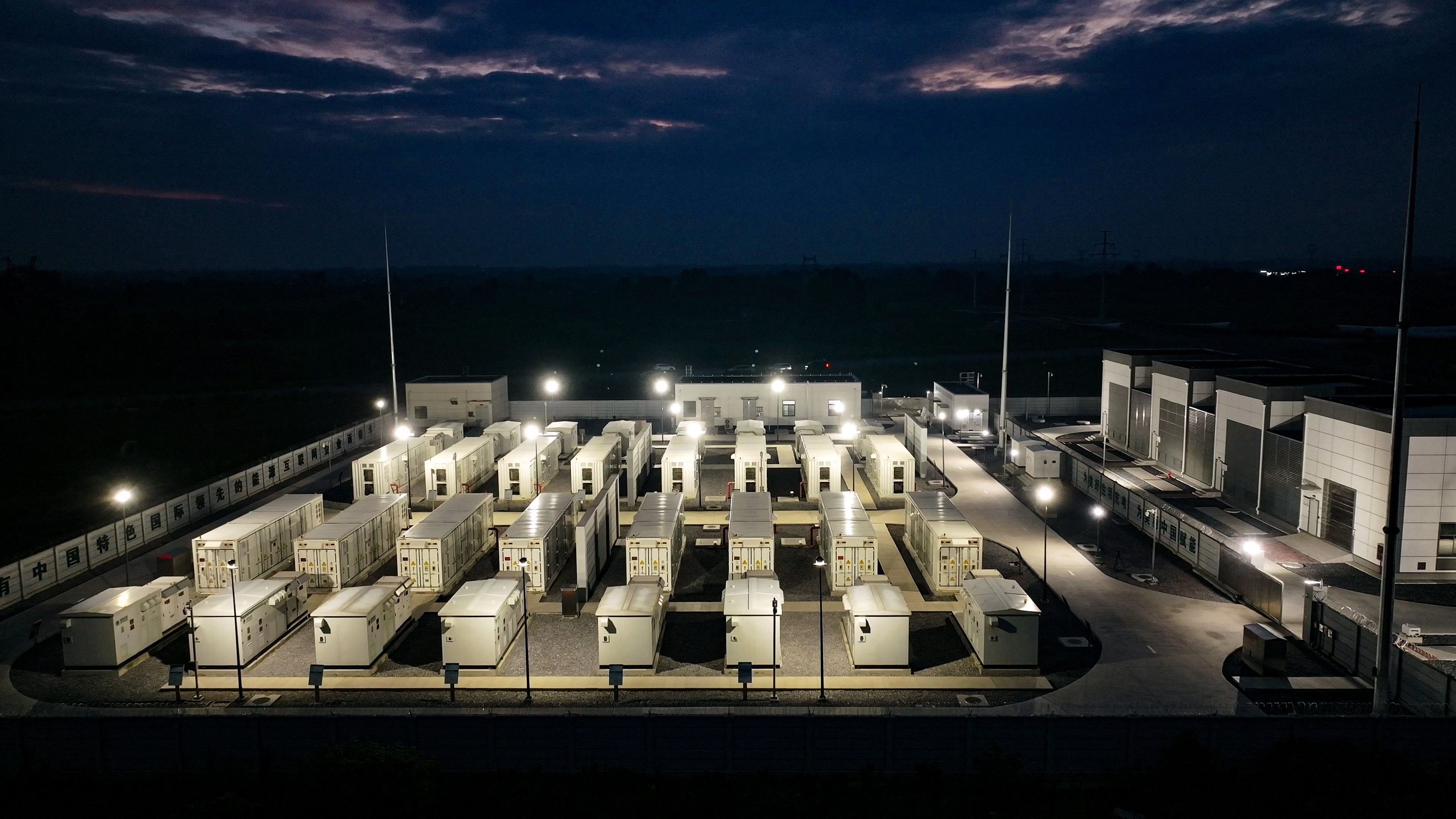By WU Chunxin, He Lingling and LIU Chao

The?site?of?Gaoqiao substation.
Recently the lights at the Jingmen Xingang power station in Jingmen city, Hubei province in central China, and at its adjacent Gaoqiao substation went out suddenly. Then they surged back just 30 seconds later. The brief flicker signified the success of the first "black start" trial of a domestic grid-forming energy storage power station.
The Jingmen Xingang station is the first domestic power station with a capacity of 100-megawatt-hours (MWh). It is an electrochemical energy storage station where the power is stored in 16 containers with lithium iron phosphate batteries.
By the end of last year, the second phase of the station was successfully connected to the grid, bringing its total capacity to 50 /100 MWh, enough to meet the daily electricity needs of more than 16,000 households. It can also absorb nearby new energy, helping the grid to peak shave and valley fill, that is, shed load during peak hours of consumption and increase it during off-peak periods.
You Li, a senior engineer at the State Grid Hubei Electric Power Research Institute, said the Xingang station is capable of establishing real-time voltage and frequency on its own. It can support a small power system and connect directly to the grid, thus having a certain degree of "independent self-management" capability.
This feature also gives the station the ability to "black start" -- the process whereby after a shutdown occurs due to a fault, the entire power system can restart without relying on external assistance. This is achieved by using generator sets that have the ability to start themselves, driving other units without this capability, and gradually restoring the operation of the entire system.
In the past, pumped storage power stations or gas turbine power stations were used for black start but their "ignition" speed is slower. An energy storage station can not only restore power supply quickly but also provides a large power output for a long duration, with a conversion efficiency of over 85 percent, surpassing other black start methods.
Since last year, the State Grid Hubei Electric Power Research Institute has established a research team and is collaborating with Nari Technology, a power solution provider, to develop related technologies. They have successfully overcome challenges such as multi-machine parallel control and dynamic current limiting when large energy storage stations are used for black starts.
During the recent test, when the Gaoqiao substation simulated the sudden power outage, it could not transmit electricity. The Xingang station then received instructions to quickly send electricity to assist the substation to start, which it did the the substation started operation – and all of this took just 30 seconds.
"During the black start process, the voltage of 24 energy storage converters was 100 percent synchronized, and both system frequency and voltage could be controlled," said Dr. Xiong Liangli from the State Grid Hubei Electric Power Research Institute.
Currently, with Hubei going through the rainy season with increased thunderstorms, it is even more crucial to ensure the safety of the power grid. Energy storage stations with black start capabilities and the ability to operate in isolated grid conditions can provide more stable power supply in extreme situations.
Xia Xiaorong, deputy director of the Development Planning Department of Jingmen Power Supply Company, said Jingmen now plans to construct four grid-forming energy storage stations twice the size of the Xingang station. That will ensure a reserve batch of disaster-resistant power sources with black start capabilities for local areas and even entire Hubei.
The trio will conduct a series of experiments in fields such as life science, fluid physics, combustion science and materials science. Notably, this is the first time that fruit flies have been taken on a Chinese space mission as experimental subjects. What made scientists choose fruit flies? What experiment will they undergo?
